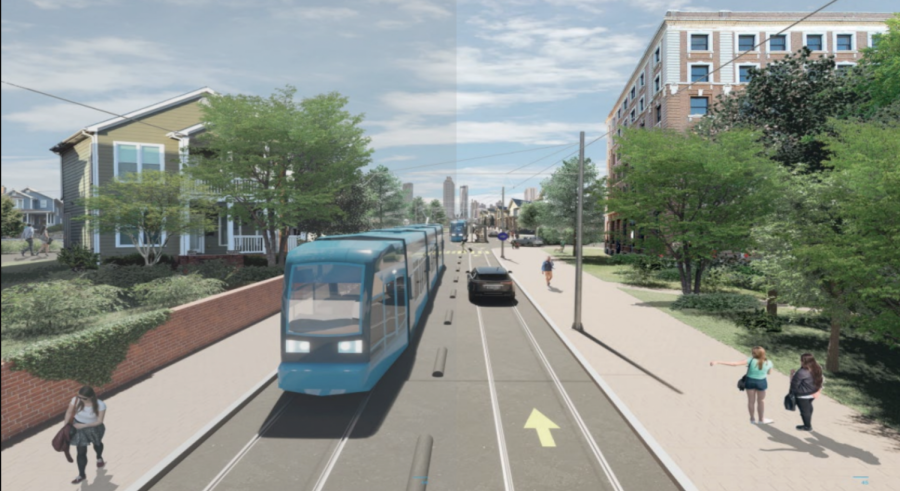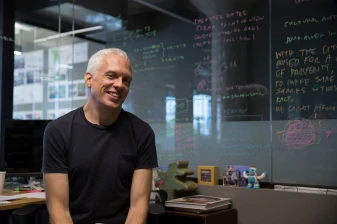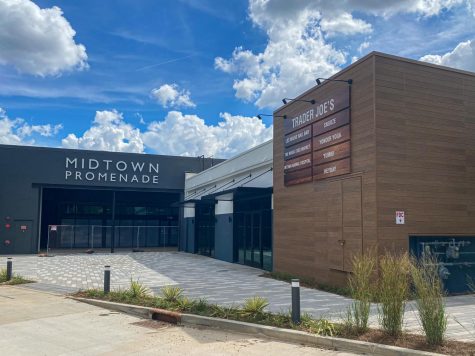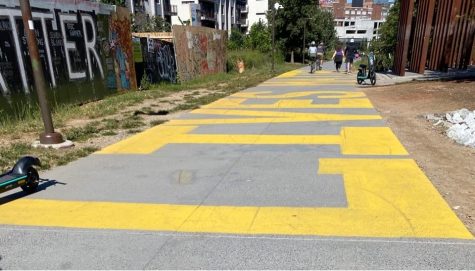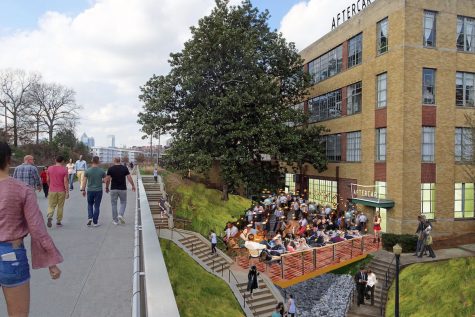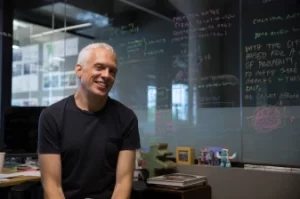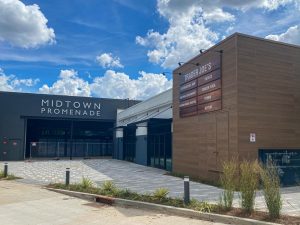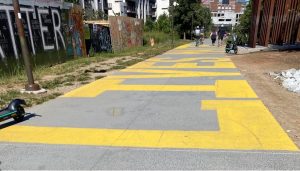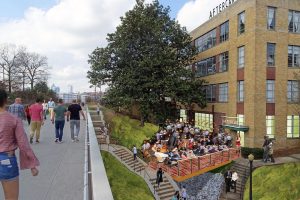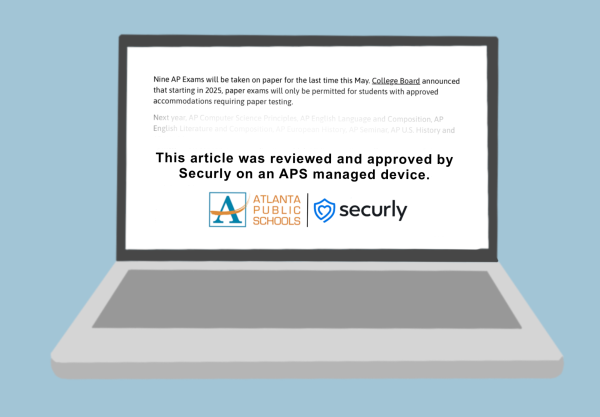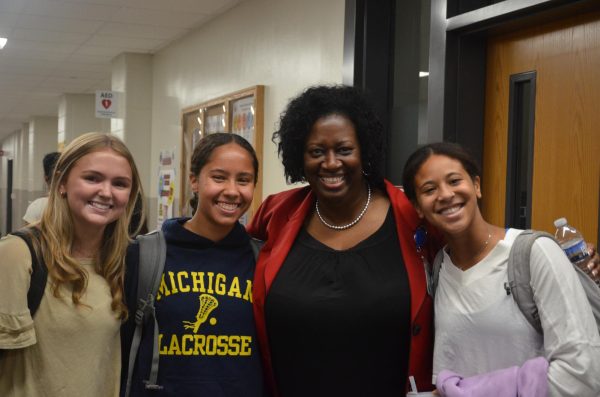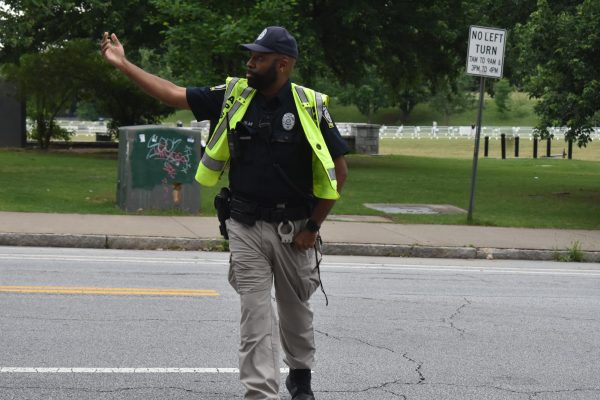Streetcar on BeltLine receives backlash from community
While the streetcar may have a seemingly straightforward and circular route, the system would evidently connect to other MARTA facilities, expanding the transit grid of Atlanta.
February 14, 2023
Scheduled to begin operation in 2028, the first leg of the BeltLine transit system will connect areas of the BeltLine to downtown by streetcar. Although appearing as an efficient mode of transport, some worry its implementation will do more harm than good.
Since its founding in 2005, the BeltLine has changed the prospects for many intown neighborhoods. The walking and biking path has encouraged rapid commercial and residential development while catalyzing an unforeseen demand for walking paths.
The Streetcar East Extension is proposed to extend the existing downtown streetcar to the BeltLine at Irwin Street and up to Ponce City Market.
“Everyone loves the BeltLine to walk and bike,” Professor of Public Policy at Georgia Institute of Technology Hans Klein said. “As a linear park, it has unleashed real estate developments, and the city is driven by real estate development. Meanwhile, the vision of running transit on the BeltLine developed. A lot of people never really took it seriously because in some ways it just doesn’t work.”
Approved by the Atlanta City Council and MARTA in 2020, the extension is projected to cost $200 million. Klein says the funding should be put towards other expenses since streetcar systems do not meet the needs of the public.
“You can do a lot with $200 million,” Klein said. “There are a few people at Ponce that want to go downtown, or maybe there is a tourist at the aquarium that wants to go to Ponce for a nice dinner, but you don’t build an entire $200 million transit system for that. So [while] there is money, it won’t provide good transit services and it will compromise our beautiful BeltLine park. ”
Klein said MARTA’s bus transport is arguably more effective, yet it is not taken advantage of by the public.
“MARTA has other proposals that do serve demand, and have proposed alternative routes that have spokes and that are implemented with bus rapid transit, which are less expensive but arguably as good as a streetcar – just not as pretty,” Klein said. “No one wants to take the bus, but instead a shiny streetcar.”
Beltline Rail Now, an organization with the goal of educating, organizing and mobilizing the people of Atlanta in support of the delivery of light rail on the BeltLine has encouraged the idea.
“By law, MARTA has to hold public meetings,” Klein said. “So as MARTA puts forth what they are thinking, they also have to listen and gain public input. Every time MARTA held a public meeting, people didn’t show up – including me – because I trusted MARTA and assumed this idea would die off. But the BeltLine Rail Now organization showed up to every single meeting, and MARTA, therefore, had to note that the public all wanted a streetcar on the BeltLine.”
Due to concerns with available routes, distribution of funds and practicality for residents, many experts in the field of transportation and members of the general public have expressed their opposition to MARTA’s proposal.
“I think that the streetcar on the Beltline is not the answer,” Midtown parent and Inman Park resident Ron Martin said. “It’s not the best answer for transit, and because it was envisioned from the beginning, certain folks are wedded to that idea. However, there are so many other much more cost-effective options to experiment with transit on the BeltLine.”
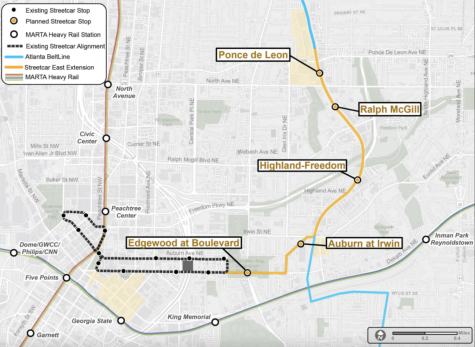
(Atlanta Beltline)
Although the BeltLine serves as an optimal spot for commercial and residential development, its location as a railway system is arguably less effective than if the streetcars were to be implemented elsewhere.
“I like transit and it is good for the city, but the BeltLine is a bad place to run it,” Klein said. “I call it the great circle route; it doesn’t go into the city. You want transit on radial spokes because people want to go into the city and come out, they don’t want to just joyride around. So, this vision of transit on the BeltLine doesn’t make sense as transit or architecturally.”
Deputy Commissioner of the Atlanta Department of Transportation of Strategy and Planning, Douglas Nagy, said, when finished, the streetcar will serve to further advance the accessibility and usage of MARTA’s transit on certain areas of the walking and biking path and will not be limited to a circular route.
“There needs to be better connectivity between Ponce City Market and the BeltLine area,” Nagy said. “If you built along the entire BeltLine, it’d be a circular route, but a grid is the ideal transit configuration, and I definitely think the Eastside streetcar contributes to expanding Atlanta’s transit grid.”
Executive Director of the Atlanta BeltLine Partnership, Rob Brawner, said by providing another mode of transportation for residents, the streetcar can increase accessibility and connectivity in Atlanta.
“Transit is at the core of the BeltLine vision,” Brawner said. “The 21-county Atlanta region is projected to add 2.9 million people by 2050 according to the Atlanta Regional Commission, totaling 8.6 million. We must continue building our transit infrastructure to support this growth and expand the regional transit network. Accessible connectivity between jobs, affordable housing and commercial hubs without depending on cars is critical for long-term equitable, sustainable development in Atlanta.”
As the BeltLine already combines two modes of transportation, Klein believes the implementation of a third mode would endanger pedestrians.
“The BeltLine has turned into this wonderful park, and if you put trains in it, you compromise the park,” Klein said. “You are going to lose half of that right of way, and MARTA is talking about installing overhead wires. You would never run transit through Piedmont Park, so why run it through this? The mixing of modes will send people to the emergency room.”
Brawner believes it is possible to sustain the beauty of the BeltLine while ensuring the safety of its users with the installation of the streetcar system.
“People love the BeltLine and want to make sure transit doesn’t detract from the experiences they enjoy today when using it,” Brawner said. “I hope the transit engineers can figure out a way for bikes, scooters, and other wheeled modes of transportation to travel safely in the same corridor as the streetcar so that the current trail could be exclusively for walkers, runners strollers and dogs.”
Brawner recognizes the hesitation surrounding a new rail system, but he encourages residents to embrace change.
“I think change – particularly when there are still unknowns – can be hard,” Brawner said. “Although it is difficult to believe now with the economic development, vibrancy and growth the BeltLine has catalyzed, many people did not believe the BeltLine would be successful. For those skeptical of transit on the BeltLine, I think they want to be sure transportation funding is being invested wisely and that transit doesn’t compromise the experience or safety of people using the trail.”
Nagy attributes the public’s delayed response to the proposal to a lack of involvement in the original debate but is optimistic as to the effects and responses the streetcar will receive from the surrounding community.
“There’s always people that enter late into the debate, but the idea of putting light rail on the Beltline has been one of the goals of the city since 1999 or 2000,” Nagy said. “The streetcar extension will better connect that inside area to downtown Atlanta, which is a needed transit connection.”

